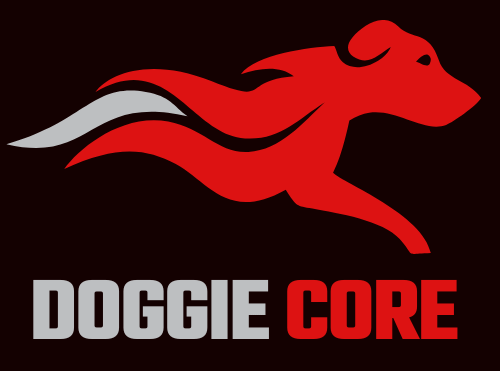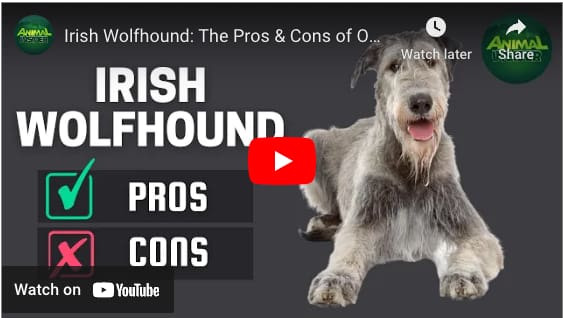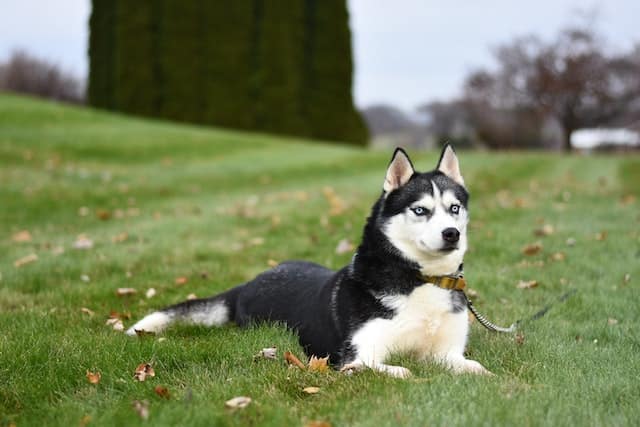Irish Wolfhound Shedding: Why Do Irish Wolfhound Shed?
Do Irish Wolfhound Shed? If you’ve ever owned or considered owning an Irish Wolfhound, one question you might find yourself asking is, “Why do Irish Wolfhounds shed?” With their majestic appearance and gentle demeanor, these lovable giants make wonderful companions. However, their long and silky coat can leave a trail of fur wherever they go. In this article, we will explore the reasons behind Irish Wolfhound shedding, from their genetic predisposition to their seasonal shedding patterns. Understanding why these beautiful dogs shed can help you better care for their coat and minimize the impact on your home.
Causes of Shedding
Shedding is a natural phenomenon that occurs in many dog breeds, including the majestic Irish Wolfhound. Understanding the causes of shedding can help us better manage this natural process and keep our furry friends comfortable and healthy. Here are some common factors that contribute to shedding in dogs:
Natural shedding cycle
All dogs go through a natural shedding cycle, where old and damaged fur is replaced with new fur. This shedding cycle helps dogs regulate their body temperature and keep their skin healthy. The duration and intensity of the shedding cycle can vary depending on the breed and individual dog. For Irish Wolfhounds, who have a dense double coat, shedding tends to be more noticeable during certain times of the year.
Changing seasons
Another significant factor that influences shedding in Irish Wolfhounds is the changing of seasons. During the transition from winter to spring, dogs often experience a more intense shedding phase, known as “blowing their coat.” This shedding is their way of preparing for warmer weather by shedding their thick winter undercoat. Similarly, when autumn arrives, Irish Wolfhounds shed their summer coat to make way for a new, thicker winter coat.
Hormonal changes
Hormonal changes can also contribute to shedding in Irish Wolfhounds. Just like humans, dogs experience fluctuations in their hormone levels throughout their lives. These changes can occur during puberty, pregnancy, and even when a female dog is in heat. Hormonal fluctuations can trigger excess shedding, leading to clumps of fur being left around your home.
Stress and anxiety
Believe it or not, stress and anxiety can also play a role in shedding for Irish Wolfhounds. Dogs are highly sensitive beings, and they can react to various stressors in their environment. These stressors can include changes in routine, loud noises, or even separation anxiety when left alone. When dogs become stressed or anxious, it can disrupt their normal shedding cycle, leading to excessive shedding as a result.
Genetic Factors
In addition to the natural causes of shedding, genetic factors can also influence the shedding patterns of Irish Wolfhounds. These factors include:
Inherited shedding traits
Both the Irish Wolfhound’s coat and shedding patterns can be influenced by their genetic makeup. Breeding for a specific coat type or texture can affect the shedding characteristics of the breed. If an Irish Wolfhound has inherited genes for excessive shedding, they are more likely to exhibit intense shedding compared to other members of the breed.
Crossbreeding effects
If an Irish Wolfhound is a mixed breed, shedding patterns can also be influenced by the other breeds in their lineage. The shedding tendencies of the non-Irish Wolfhound parent can be passed down to the offspring, potentially resulting in a different shedding pattern than what is typical for a purebred Irish Wolfhound. Understanding the genetic background of your dog can give you insight into their shedding behavior.
Health Issues
Some health issues can contribute to excessive shedding in Irish Wolfhounds. It’s important to be aware of these potential health concerns and address them promptly with the help of a veterinarian. Here are several health issues commonly associated with shedding:
Skin conditions
Irish Wolfhounds can be prone to certain skin conditions that can lead to excessive shedding. These conditions include allergies, dermatitis, fungal or bacterial infections, and parasites. If you notice that your Irish Wolfhound’s shedding is accompanied by redness, rash, itching, or any other signs of skin irritation, it’s crucial to consult with a veterinarian to determine the underlying cause and appropriate treatment.
Allergies
Just like humans, dogs can develop allergies to various triggers, such as pollen, dust mites, certain foods, or flea saliva. Allergic reactions can manifest in dogs through symptoms like itching, skin irritation, and hair loss. In Irish Wolfhounds, allergies can contribute to increased shedding. Identifying and managing your dog’s allergies, whether through dietary changes, medication, or allergen avoidance, can help reduce shedding caused by allergic reactions.
Parasites
Parasites, such as fleas, ticks, and mites, can cause significant discomfort to dogs and contribute to excessive shedding. These pesky critters feed on your dog’s blood and irritate their skin, leading to intense itching and scratching. Irish Wolfhounds, with their dense coats, can be particularly vulnerable to these parasites. Regular preventative measures, such as flea and tick treatments recommended by your veterinarian, can help keep parasites at bay and reduce shedding caused by their presence.
Grooming and Shedding Control
While we can’t eliminate shedding entirely, there are several grooming practices and strategies that we can use to manage and control shedding in Irish Wolfhounds. These include:
Regular brushing
Regular brushing is essential for Irish Wolfhounds to help remove loose fur and prevent it from accumulating around your home. A slicker brush or a grooming rake can be effective tools for brushing the thick double coat of an Irish Wolfhound. Brushing also helps distribute the natural oils in your dog’s fur, promoting a healthier and more lustrous coat.
Bathing and grooming products
Using appropriate bathing and grooming products can help manage shedding in Irish Wolfhounds. Opt for a gentle dog shampoo that is designed to nourish the skin and coat, without stripping away essential oils. Following the bath, using a conditioner can help keep the fur moisturized and reduce shedding caused by dryness and brittleness. Additionally, anti-shedding sprays or wipes can be helpful in reducing excess shedding between baths.
Healthy diet and supplements
A balanced and nutritious diet plays a crucial role in the overall health of your Irish Wolfhound, including their coat and shedding patterns. Ensuring that your dog is receiving a high-quality diet that meets their specific nutritional needs can help minimize excessive shedding. Omega-3 fatty acid supplements, such as fish oil, can also promote a healthy coat and skin, reducing shedding caused by dryness or inflammation.
Hydration and moisture
Proper hydration is key to maintaining healthy skin and coat. Ensure that your Irish Wolfhound has access to fresh water at all times, especially during hot or dry weather. In addition to providing ample hydration, you can also incorporate moisture into your dog’s routine by using a humidifier in your home or providing occasional misting sessions with water to prevent excessive dryness and shedding.
Avoiding excessive grooming activities
While regular grooming is important, it’s also crucial to avoid over-grooming your Irish Wolfhound. Excessive brushing or bathing can strip away the natural oils in their coat, leading to dryness and potentially more shedding. Stick to a consistent grooming routine that balances cleanliness with the preservation of your dog’s essential oils.
Environmental Factors
Several environmental factors can impact shedding in Irish Wolfhounds. It’s important to consider these factors when managing your dog’s shedding:
Climate and temperature
The climate and temperature of your surroundings can affect your Irish Wolfhound’s shedding patterns. In colder climates, they may develop a thicker winter coat, leading to more intense shedding when the seasons change. In warmer climates, Irish Wolfhounds might shed more consistently throughout the year but at a slightly lower intensity. Understanding the climate your dog lives in can help you anticipate and manage their shedding patterns.
Indoor lifestyle vs. outdoor lifestyle
Irish Wolfhounds that predominantly live indoors may shed less compared to those that spend a significant amount of time outdoors. Indoor dogs are typically exposed to more stable temperatures and controlled environments, which can influence shedding patterns. Outdoor dogs may be exposed to more seasonal changes and natural elements, leading to more noticeable and intense shedding.
Behavioral Factors
Various behavioral factors can impact the shedding patterns of Irish Wolfhounds. By understanding and addressing these factors, we can help minimize shedding. Here are some key behavioral factors to consider:
Physical activity and exercise
Regular physical activity and exercise can contribute to a healthy coat and less shedding in Irish Wolfhounds. Exercise promotes good blood circulation, supports healthy skin, and helps regulate natural oil production. Ensuring that your Irish Wolfhound receives enough exercise can help maintain their coat’s health and minimize excess shedding.
Barking and stress levels
Irish Wolfhounds that bark excessively or experience high levels of stress may exhibit increased shedding. Constant barking or chronic stress can disrupt their hormonal balance, leading to imbalances in their shedding cycle. Implementing techniques to manage barking and reduce stress, such as positive reinforcement training, providing mental stimulation, and creating a calm environment, can help minimize shedding associated with these behavioral factors.
Separation anxiety
Separation anxiety is a common issue among dogs, and it can manifest through various signs, including excessive shedding. When an Irish Wolfhound becomes anxious or stressed due to separation from their owner, their shedding cycle may be disrupted, leading to increased shedding. Managing separation anxiety through gradual desensitization and providing comfort and reassurance can help reduce shedding caused by this behavioral issue.
Managing Shedding
While shedding cannot be completely eliminated, there are several strategies you can implement to manage shedding effectively and keep your home clean and comfortable. Here are some tactics to consider:
Regular grooming routine
Establishing a regular grooming routine is essential for managing shedding in Irish Wolfhounds. Set aside dedicated time for brushing and grooming, ensuring that it becomes a consistent part of your dog’s care. Regular grooming helps remove loose fur and minimizes the amount of hair that ends up on your furniture and floors.
Frequent vacuuming and cleaning
Investing in a high-quality vacuum designed for pet hair can be a game-changer for managing shedding. Regularly vacuum your home, paying close attention to areas where your Irish Wolfhound spends the most time. Additionally, using lint rollers or sticky brushes can help remove stray hairs from upholstery and clothing.
Reducing allergens in the living space
If you or someone in your household suffers from allergies, it’s crucial to take steps to reduce allergens in your living space. Regularly dust, vacuum, and wash bedding to minimize the presence of allergens, such as pet dander. Implementing an air purifier with a HEPA filter can also help capture and reduce airborne allergens, including shed fur.
Monitoring changes in shedding patterns
Keep a close eye on your Irish Wolfhound’s shedding patterns and monitor any changes or unusual signs. Sudden increases in shedding or excessive hair loss could be indicative of an underlying health issue or other factors that require attention. Regularly check their skin for any signs of irritation or infection. If you notice anything concerning, consult with your veterinarian to address the issue promptly.
Professional Help and Tips
Seeking professional help and utilizing specialized tools and services can make a significant difference in managing shedding in Irish Wolfhounds. Consider the following options:
Consulting a veterinarian
If you are concerned about your Irish Wolfhound’s shedding or if you notice any irregularities, it is always best to consult with a veterinarian. They can assess your dog’s overall health and determine if there are any underlying medical conditions contributing to excessive shedding. Additionally, your veterinarian can recommend dietary changes or supplements that may help reduce shedding.
Professional grooming services
Taking your Irish Wolfhound to a professional groomer can be a beneficial option for managing shedding. Professional groomers have the knowledge and experience to handle the specific needs of Irish Wolfhounds, including proper brushing techniques and coat maintenance. They can also offer specialized de-shedding treatments to minimize shedding.
Using de-shedding tools and products
Various de-shedding tools and products are available in the market that can help reduce shedding in Irish Wolfhounds. These tools, such as de-shedding brushes and grooming gloves, are designed to remove loose fur efficiently without causing any discomfort to your dog. Additionally, de-shedding shampoos and conditioners can help loosen and remove excess hair during baths.
Managing shedding during shedding seasons
During peak shedding seasons, such as spring and fall, it can be helpful to implement additional shedding management strategies. You can increase the frequency of brushing, incorporate supplements into your Irish Wolfhound’s diet to support healthy shedding, and provide extra moisture to reduce dryness and brittleness of the coat.
Shedding vs. Non-Shedding Breeds
It’s important to note that shedding is a natural occurrence in most dog breeds, including Irish Wolfhounds. However, some breeds are considered non-shedding or low-shedding, making them more suitable for individuals who are highly allergic or sensitive to pet dander. When considering a non-shedding breed, such as a Poodle or a Bichon Frise, it’s crucial to understand that these breeds require regular grooming and coat maintenance to prevent matting and tangling.
Comparison with non-shedding breeds
Non-shedding breeds have hair instead of fur, which grows continuously and needs to be trimmed or groomed regularly. While these breeds may shed less or not at all, they do require more attentive grooming to manage their coats effectively. Irish Wolfhounds, with their double coat, provide warmth and protection but naturally shed more compared to non-shedding breeds.
Factors to consider when choosing a breed
When choosing a breed, shedding is just one factor among many to consider. It’s important to take into account your allergies, living situation, grooming capabilities, and overall compatibility with the breed’s characteristics. If you are considering an Irish Wolfhound or any other breed, thorough research and conversations with breeders and owners will help provide insight into shedding expectations and grooming requirements.
Conclusion
Shedding is a normal process for Irish Wolfhounds and many other dog breeds. Understanding the causes and factors that contribute to shedding can help us better manage and control this natural occurrence. By implementing a consistent grooming routine, addressing any potential health issues, managing environmental factors, and seeking professional help when needed, we can minimize shedding and keep our Irish Wolfhounds healthy, comfortable, and stylish. Remember, shedding is a small price to pay for the joy and love that our furry companions bring into our lives. Embrace the shedding and celebrate the unique beauty of your Irish Wolfhound!











